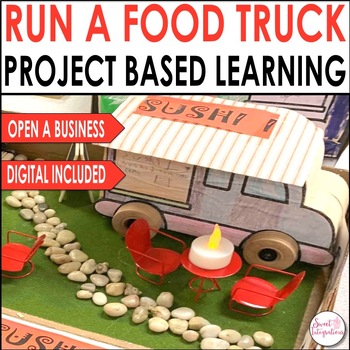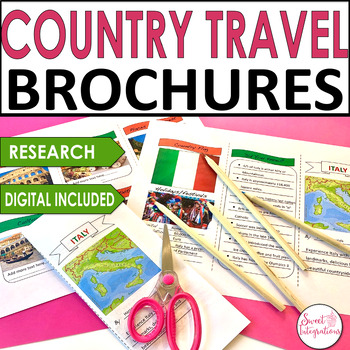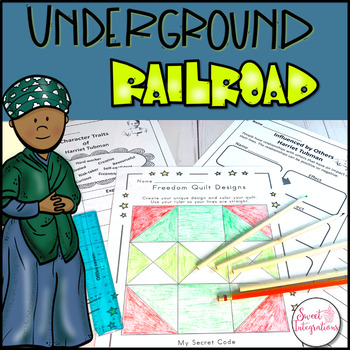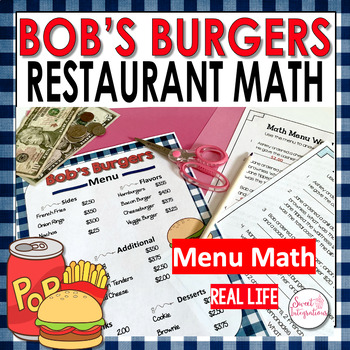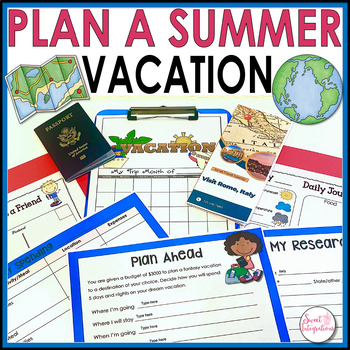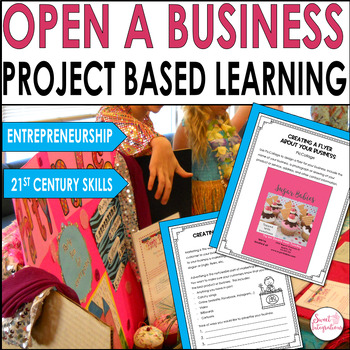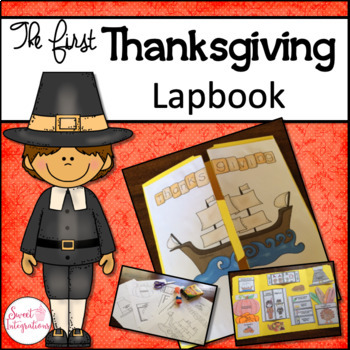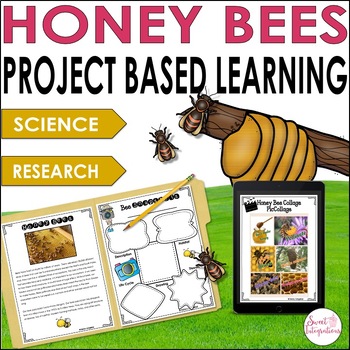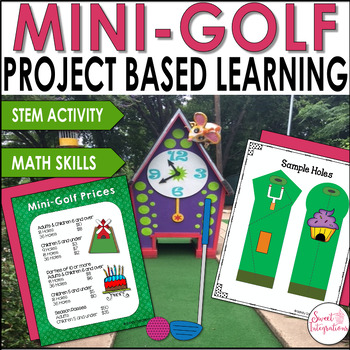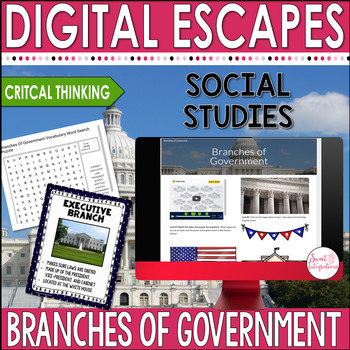We want our students to return back to school refreshed and ready to learn. But, we also don't want them to fall behind. Summer is a great time for students to continue working on important skills. With all the activities going on this summer, it's really easy to create opportunities for kids to write. There are no due dates, no grading, and students can select their own writing formats. In this post, I have a 6 tips to promote writing through the summer. And, guess what! I've included ideas with technology!
Sweet Integrations: reading
Showing posts with label reading. Show all posts
Showing posts with label reading. Show all posts

Teaching Kindness and Acceptance With The Name Jar
As teachers, we want to provide a positive experience for our students. This involves creating a safe and loving classroom environment. The beginning of the year is the perfect time to teach kindness and acceptance. With so many students coming from other cultures, The Name Jar is an excellent book to read at the beginning of the year.
I've joined my blogger friends with The Reading Crew to share some of our favorite back-to-school read-a-loud books or reading skills activities. We'll share teaching tips and FREEBIES to go along with the resources.

Using Digital Comics to Motivate Reluctant Readers and Writers With Sample
Using comics or graphic novels in your teaching is a fun way to keep your students motivated. Reluctant readers and writers tend to get excited over using comics because comic writing is less intensive. Students can be imaginative in their writing and creative in their choice of characters and props. Using comics can even increase a student's vocabulary. Jennifer Haines wrote an excellent article about Teaching With Comics. In this post, I've provided ideas for Using Digital Comics to Motivate Reluctant Readers and Writers.
1

Teaching Theme With The Magic of Friendship Snow
Making friends can sometimes be difficult for children and even adults. This beautiful book The Magic of Friendship Snow, conveys how friendships are magical, unique and special; just like a snowflake. This beautifully illustrated book sends a message about kindness, acceptance, and challenges in society.
I'm joining my friends from The Reading Crew for a Winter Linkup. We're sharing some of our favorite winter books and lessons to go along with each book.

Celebrate Diversity With Mentor Texts
To Celebrate Diversity With Mentor Texts, I've selected the book I Am Enough by Grace Byers. Because my granddaughter is biracial, I am always looking for books to boost her self-esteem and empower her. Grace Byers is biracial and a child of deaf parents. She was bullied as a child. This inspired her to write this book and I Believe I Can. Make sure to download your free activities about the book.


Teaching Deep Thinking With Drawing Conclusions
Sometimes you have to encourage your students to be detectives to dig deeper in order to find ideas that the author doesn't put in the text. Readers look for clues in the text which help them understand the story. Readers look for facts and details to determine what the author is telling them. In this post, I'm going to share some fun activities for Teaching Deep Thinking With Drawing Conclusions.
My friends with The Reading Crew and I will share ideas and tips for Teaching Deep Thinking. You can download FREE resources and enter to win $20 Teachers Pay Teachers Gift Cards.

Using Pictures and Videos to Teach Inferencing With FREEBIE
The term "inference" refers to the process of using observation and background knowledge to determine a conclusion that makes sense. When reading, students use the details in the text and background knowledge to figure out information that is not there. They also study illustrations and other visuals within the story. Making inferences helps readers understand the author's message and also leads to deeper learning. In this post, I'll provide examples of Using Pictures and Videos to Teach Inferencing.

Inferencing With Pictures
Inferencing with pictures is very similar to inferring from text because students study details of the picture and video. Then they apply their background knowledge to infer what is going on.
- Guess the Picture Activity - Teachers will display only part of a picture to the students. Students write what they observe, what they know, and then what they infer. They have so much fun sharing their results. Then, show the full image to the students. Discuss the process with the students.
- Pictures from Magazines - Students can cut out pictures from magazines and complete the sentences and graphic organizer.
- Google Slides Activity - Students will observe a photo on Google Slides, then complete the graphic organizer. Students can also add their own photos they research on Google Images and add those to the slides.
Additional Questions to Ask
- What is the time of the year or day?
- Where is this taking place?
- Who is in the photo?
- How do you think the people feel?
For more fun photos that you can use for inferencing or writing prompts, just go to my Inferencing Pinterest Board.
Inferencing With Videos
When working with struggling readers or introducing the concept of inferencing, try using video clips or even commercials. Using videos helps in building confidence. You'll be amazed at how quickly the students begin to make inferences. Pause periodically during the video to ask questions based on what they observe and their prior knowledge. If you use EdPuzzle, there are lessons already set up with questions.GRAB YOUR FREEBIE

Using Digital Brochures With Nonfiction and Research
With Martin Luther King Day, Chinese New Year, Presidents Day, and Black History Month coming up, it's a great time for studying biographies and nonfiction. Using Digital Brochures is an easy way for students to do their research about a person or place, and create a colorful brochure. In this post, you'll learn more about Using Digital Brochures With Nonfiction and Research.
0

GO DIGITAL With Digital Graphic Organizers With FREEBIE
Graphic Organizers can be used in different ways with a variety of subjects. They are easy to implement and cover skills about almost any topic or subject area. Graphic organizers can be used in science, social studies, reading comprehension, writing, or math. The neatest part of using digital graphic organizers is that they are PAPERLESS. The templates can be used over and over again. In this post, I'll give you reasons to GO DIGITAL With Graphic Organizers and provide you with a FREEBIE.
0

How to Teach Characterization With Technology and The Butterfly
I'm a huge fan of Patricia Polacco. There are so many skills and life lessons that can be taught through reading her wonderful books. One of my favorites is The Butterfly. It's a story about two courageous young girls during World War II. In this post, I'm going to share with you How to Teach Characterization With Technology and The Butterfly. Make sure to download your free resources.

Reading Informational Text - Using Prior Knowledge to Deepen Learning
When reading informational text, using any prior knowledge students may have to make connections, will lay the foundation for new knowledge and deepens learning.

0
"Prior knowledge lies dormant until making a correlation between what was learned and what is new learning." (Virginia L. Wallace and Whitney Norwood Husid)


Using Technology to Promote Summer Reading
As teachers we want to ensure that our students continue learning through the summer. Did you know students lose at least two to three months in reading and most students lose two months of math skills in the summer? It's important for us to make sure that all of our children are stimulated. For those who have access to technology, I have a some ideas in using technology to promote summer reading.
1

Celebrate Spring With Wildflowers and Legends
I think the month of March is the busiest time of year in Austin. The city has been packed with people and "scooters" for SXSW. I love the energy but the traffic is unbearable. As soon as SXSW is over, we host a huge Dell Match Play golf tournament with all of the top golfers. In this post, you will learn about my favorite books about Wildflowers and Legends.

Even though the city has visitors from all over the world, I love taking time to enjoy what this season has to offer. The bluebonnets are beginning to bloom and trees are full of beautiful blossoms.
Tomie dePaola has written two of my favorite books to celebrate spring and wildflowers. Your class can also celebrate the season with The Legend of the Bluebonnet and The Legend of the Indian Paintbrush, plus they can learn about legends and plants.
Former First Lady, Lady Bird Johnson, brought beauty back to our country by blanketing our roadsides with native wildflowers. She also established the National Wildflower Research Center in Austin. They collect and preserve seeds of flowers on the verge of extinction and educate visitors about conservation.

I love sharing my favorite spring reading products about wildflowers.
Just drop by my TPT Store for more units for spring.


Read Engaging Nonfiction Text With Newsela
If you're looking for high-interest nonfiction text for your students, I highly recommend the website or app Newsela. Teachers can use Newsela for reading intervention and differentiation with the range of reading levels for each article. So, why waste your time on searching for articles and reading passages when your students can read engaging nonfiction text with Newsela.

0
Current News
Nonfiction text with Newsela content is updated daily so your students are reading current information. It's cross-curricular content is perfect for learning about all subject areas. You can assign articles to individual students, groups, or to the whole class. Students will no longer feel singled out because you can adjust the reading level while they read the same article. Then, you can assess your students according to their level.Selecting Articles
Are you looking for articles on endangered animals? Black history? The Winter Games? You can find articles by curriculum headings, featured text, or just through a general search. It's so easy to find articles for your needs. I always recommend using Newsela with project based learning. You can assign timely, high-interest articles about the problem or subject and immediately assess your students. It's also important to teach our students media literacy. Newsela has topics on distinguishing between real and fake news.
Narrow Your Search
To narrow your search, select the grade level, reading skill, language, and special features. Newsela has added Power Words to the selection. When students click on the power word, a kid-friendly definition pops up. If you want to save and article, just bookmark it. Other features are added to help you make the selection.Logging Into Newsela
Students are given options when logging into Newsela. Newsela integrates with management systems your schools may use. If you have Google Classroom, you import your Google Classrooms into Newsela.Content Partners
Newsela has teamed up with some amazing organizations for their content. With the emphasis on fake news and media literacy, they are committed to providing up-to-date and accurate information for our students. These are just a few of the contributors.
Learn a little more about reading engaging nonfiction text with Newsela by watching this video.


Using Multicultural Literature as Mentor Text

5 Ideas for Digital Book Reviews
I've joined friends from the Reading Crew to share our ideas and resources to help your students BLOOM in reading. Be sure to enter our raffle and visit each blog for FREE resources. We have $625 in prizes!
When you assign book reviews to your students, would you like alternatives for home projects or written reviews? I have 5 Ideas for Digital Book Reviews that may help you next time you assign book reports to your students. At the bottom of the post, you can download your FREE templates.

Celebrate Valentines With My Heart is Like a Zoo With Freebie
One of my favorite books to read at Valentines is My Heart is Like a Zoo. This precious book can be read to any elementary level and I love the fun activities your students can do with it. They can create their own zoo animals with heart shapes and use similes to describe each animal. Plus, you can use Google Slides™ to complete the activity.

Tools 4 Students - Graphic Organizer App for Reading
Are there times when you want to use graphic organizers for reading in your classroom and don't have time to create them? Tools4Students is a great iPad app that contains 25 different templates for reading skills. You can choose from Cause/Effect to Story Elements to Fact/Opinion. All 25 colorful graphic organizers are excellent for digital learning.

Teaching Legends With The Legend of the Poinsettia With Freebie
If you're like me, during the holiday season, I love to decorate my home with poinsettias. Throughout the years, these brilliant crimson star-shaped plants have become a popular symbol of Christmas. In this post, the focus is on teaching the elements of legends with The Legend of the Poinsettia.
The Flor de Nochebuena or Flowers of the Night are native to Mexico. The association of the poinsettia with Christmas dates back to the 16th century with the legend of a young girl who was too poor to provide baby Jesus with a gift celebrating his birthday. Pepita gathered weeds along the roadside and placed them at the church alter. The weeds turned into beautiful crimson blooms which were called poinsettias.

0
The Flor de Nochebuena or Flowers of the Night are native to Mexico. The association of the poinsettia with Christmas dates back to the 16th century with the legend of a young girl who was too poor to provide baby Jesus with a gift celebrating his birthday. Pepita gathered weeds along the roadside and placed them at the church alter. The weeds turned into beautiful crimson blooms which were called poinsettias.


Characterization and Emojis in the Classroom

How
do you feel when you see emojis? Do they make you laugh, sad, angry? Do you
have specific feelings when you see them? We use emojis to express our emotions
and to convey a message. This is why using emojis in the classroom can be such a great activity!
When reading a story, common core standards require
students to "describe characters in a story
(e.g., their traits, motivations, or feelings) and explain how their actions
contribute to the sequence of events."
Using emojis in the classroom can help students with
the vocabulary to describe personality traits or feelings of people or animals
in a story. In this post, you'll learn how you can use emojis in the classroom to teach
characterization.
Subscribe to:
Posts (Atom)
Powered by Blogger.





































